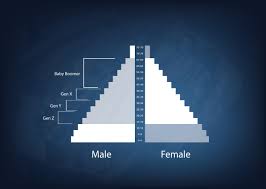With the developments in medicine and various branches of science increasing the average human lifespan, the human population, which has increased tremendously, has reached almost 8 billion. Currently, the population of some of the different countries on different continents is increasing, while others are decreasing or not changing much. While the population of developing and undeveloped countries (usually African countries) is increasing rapidly, the increase in the populations of world giants such as the United States of America, Russia, and China is less frequent. This change in the population affects different areas, especially the level of welfare. So how can population affect welfare?
One of the factors on which the welfare of the people in a country depends is the population. Country welfare is not exactly about overpopulation, but about the distribution of age groups. Working segment in a country; bears the burden of retirees, children, and young people who will join the workforce in the future. In order for this burden to be light, it is expected that the ratio of individuals joining the workforce to the remaining population is higher. Since the number of individuals belonging to various age groups in developed countries is balanced, economic welfare is in a higher position. The reason for this is that citizens who are included in the workforce can support the old and young people. One of the reasons for the rapid increase in the population in underdeveloped and developing countries is the high fertility rate. The high fertility rate provides an increase in the workforce in the medium term, but if new citizens cannot be employed in the country in the future, it may cause an unemployment crisis and great damage to the country’s economy in the future. Therefore, developing and underdeveloped countries should make good use of this trump card. In some countries, the elderly and middle-aged segments predominantly constitute the population. Japan is an example of one of these countries. Japan II. After World War II, there was a huge population explosion, then an economic miracle (1952-1971 Japanese economic miracle) experienced a dramatic decrease in the fertility rate. Approximately 50 years later, this event has resulted in a significant increase in the elderly population of the country. Therefore, this situation puts pressure on the economy as the burden on the segment of the workforce increases.
To summarize, the distribution of the population pyramid of the country, not the population, plays an important role in the welfare of the country. The large share of the workforce in the population is a sign of high country welfare. In countries with a large elderly population, the burden on the economy is greater. Countries with high fertility rates, on the other hand, can turn this situation into an opportunity with the right decisions and increase their country’s welfare.

